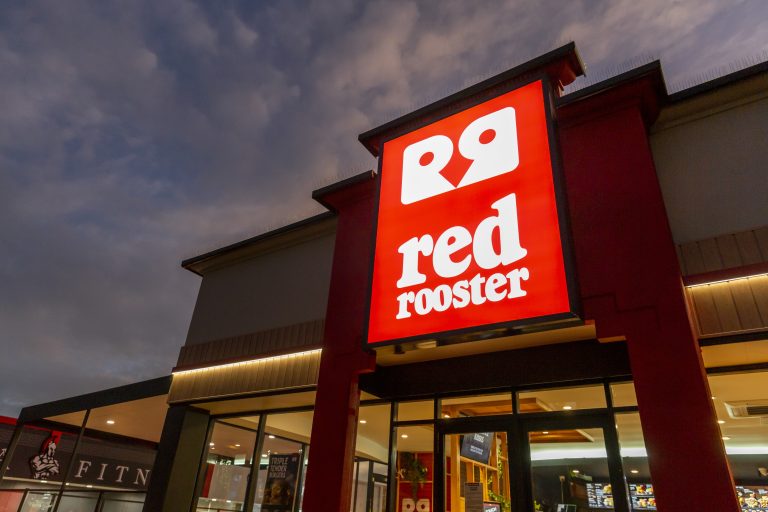Capital chills: A big reset hits commercial property

Global investors are simply reconsidering the required benchmark returns across differing sectors. Picture: NCA NewsWire / Flavio Brancaleone
Deals are taking longer. Some are falling over. Buyers are chipping. It’s the same story almost right across commercial real estate.
The flourish that was in the market as big local and international investment houses battled for the position has in the main fizzled out.
A big reset is hitting many property markets. And the smart players are adjusting how they operate in this new world, where rising interest rates and higher building costs are the order of the day.
But the underlying occupancy dynamics remain strong, with industrial still tight and offices and retail recovering even as spending could be crimped if confidence is hit.
Qualitas chief executive Andrew Schwartz says large capital providers are still in the market but there is now a deeper level of consideration globally. “Global investors are simply reconsidering the required benchmark returns across differing sectors and geographies,” he said.
The same direct real estate themes are still playing out but Mr Schwartz says the reweighting of capital costs is creating a deeper consideration of required debt and equity returns.
“It is also in this environment that opportunistic investment strategies become prevalent,” he said. “We have noticed interest in inbound inquiry from investors looking to get ready for this type of deal flow.
“However, with base rates and risk premiums increasing it does create a change in how one views target returns required from assets, not necessarily in a negative way, just being realistic with the movements in the current market.”

Qualitas chief Andrew Schwartz.
On his reckoning, both vendors and purchasers remain willing participants in the markets. “However, with forward swap rates up near on 200 basis points over the last few months it creates an environment where large capital investors are considering what is the appropriate return against these higher costs of capital,” he said.
Cushman & Wakefield research manager Glenn Lampard says the uncertainty in markets is not necessarily bad for some players.
“We’re starting to see a reallocation of capital back towards office,” Mr Lampard said.
“Industrial has been seeing a vast majority of the capital being allocated to the real estate sector, but I think people are starting to get a little bit nervous now, with respect to that pricing, and that interest rates are on the way up.”
He believes rate rises will put more focus on driving the incomes, particularly in the industrial sector where rents have been rising rapidly as the market appreciates the longer-term value of premium stock.
Knight Frank chief economist Ben Burston said investors were redoing calculations about what stacked up. Parts of the market that had the most stellar growth, in particular industrial, may be more susceptible to change. “The impact might become clear a bit more quickly,” Mr Burston said.
Some sectors were rerated upwards during the coronavirus crisis, with long-leased essential services being targeted for their resilient income.
They may slip from favour if an inflation breakout takes hold. Mr Burston noted short-term assets could allow for rents to be reset faster.
But macroeconomic forces are not the only drivers that are influencing pricing, with the Knight Frank economist pointing to global asset managers as another influence, “To the extent that they’re putting down equity instead of debt, then those sorts of products can see less impact,” Mr Burston said.
But secondary stock often attracts buyers that are more reliant on debt. “In a climate of higher funding costs … debt-backed buyers are not going to be as active and hence you could see more of an impact there,” he said.

CBRE head of research Henry Chin.
CBRE head of research, Asia-Pacific, Henry Chin, agrees that shifts in capitalisation rates, by which properties are measured, are more likely to be on lower-quality assets.
But he says Australian interest rates have moved less aggressively than in the US and argues that local capitalisation rates will remain stable.
“Australia is part of the Asia-Pacific growth story,” Dr Chin said, with the country seen as a safe haven.
He argues that there is demand from major offshore institutions for prime Australian assets.
“They want to come here and they’re sticking with more traditional classes,” he said.
JPMorgan analysts said last month that they expect capitalisation rates, by which properties were measured, to expand.
“Breaking down our overall expectations of 50 basis points in cap rate expansion, we forecast cap rate expansion of 80 basis points for office, 50 basis points for industrial and long-leased property, 40 basis points for malls, 10 basis points for convenience retail and 20 basis points of compression for self-storage,” the bank’s property team wrote.
“We see the greatest valuation risk in office as it doesn’t have the benefit of accelerating rent growth like industrial, or the rebound of Covid-impacted income like retail malls via rental abatements unwinding and ancillary income recovering,” they wrote, with storage and convenience retail tipped to be most resilient.
Jefferies equity analyst Sholto Maconochie said capitalisation rate spreads were approaching GFC levels. “Cap rates are at historic lows and the spread to the 10-year bond rate is approaching GFC levels. We expect at least 30-50 basis points of cap rate expansion from 2023 but expect cap rates and asset values to hold firm this year given capital allocation towards real assets remaining robust and transactional evidence supportive,” Mr Maconochie said.
But he warned that higher inflation, rising interest rates, the mounting cost-of-living pressures, and negative housing wealth effect from house prices falling could mean that demand for discretionary goods would wane and construction and residential demand would weaken as costs rise.
Macquarie analysts undertook a major review of asset values across the listed property sector that prompted them to adopt a more cautious outlook for valuations in office followed by retail and industrial.
The broker now expects office cap rate expansion of up to 40 basis points, retail up to 20 basis points, while it is assuming broadly flat cap rates in industrial, which has been helped by a catch-up in book values to prior transactional evidence.
The market has partly been reset as the 10-year bond yield has hit about 3.9 per cent and the real yield has also soared. Listed property stocks had benefited from rising asset values as capital has taken advantage of the decline in reference rates.
“However, as this trend has reversed … there could be headwinds to asset values,” Macquarie said. The bank’s analysis cautioned that despite sharp movements in risk-free rates, there were a number of offsetting factors likely to result in more limited expansion of capitalisation rates and discount rates.
These included the amount of “dry powder” in the real estate sector doubling since 2014, providing deep capital that can chase assets, and the fact that asset values did not fully reflect the decline in risk-free rates over 2020-2021, creating a buffer to asset values relative to current book values.
Just on the basis of capitalisation rate spreads to real yields, the analysis – drawing on JLL figures – noted that office cap rates at 5.1 per cent were broadly in line with the long-run average and retail regional cap rates were 5.3 per cent, above the long-run average.
But Macquarie said this did not reflect the higher risk premium required in retail moving forward given it faced structural headwinds. Industrial cap rates were 4.1 per cent with the spread below the long-run average. But the analysis said this did not account for the strong rental growth in the sector.
“We believe asset values are skewed to greater downside risk in office, followed by retail and industrial,” Macquarie said.
The big reset is to come.







